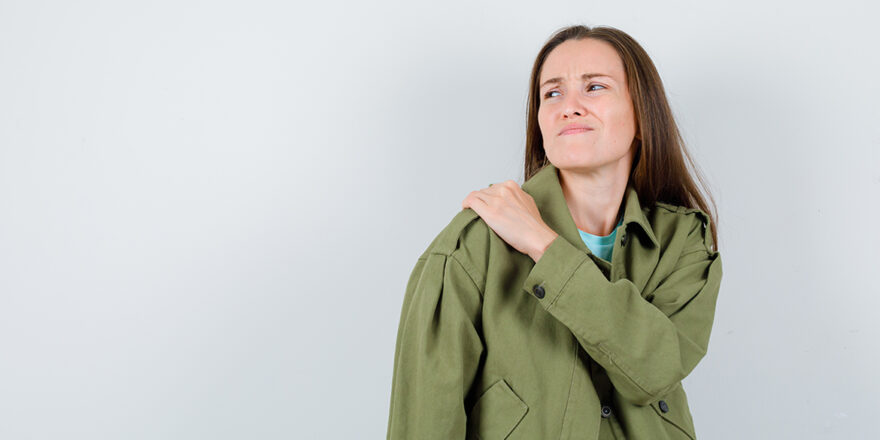NECK PAIN/CERVICAL PAIN
Neck pain issues has been increasing especially since the era of laptops and smart phones. Due to likelihood of neck pain to become a chronic problem, it is important to look into the risk factor along with preventive and treatment measures.
CAUSES
- Cervical Joint Arthritis – It happens as a result of disc degeneration, whiplash injury. There are 7 Cervical vertebrae in the Spine. If lower cervical vertebrae are affected from C4 to C7 the pain is in lower neck along with radiation to bilateral shoulders or interscapular area, upper back. If C1,C2 or C3 vertebrae are involved then pain is felt in upper neck and back of the head. There are certain injections which target those nerves which are around inflamed joints. If it gives pain relief then it is followed by RFA ( radiofrequency ablation) for more long-lasting relief.
- Cervical disc herniation/Pinched nerve – The disc or adjacent tissues when compress on the nerves it gives symptoms of neck pain radiating to arm and hand. This could be associated with arm or hand weakness, numbness, tingling.
- Trigger points/Muscle Knots – most common cause for this is poor posture, lack of activity and muscle weakness. These points on touch feels different from the surrounding muscles and they are painful to touch too.
- Sometimes emotional stress also leads to neck pain which if we let in stay like this leads to chronic neck pain. This needs to be treated with relaxation techniques.
- Cervicogenic headache – Sometimes the nerves compressed in the back of the head especially the C2 and C3 nerve leads to pain in the back of the head, radiating to the front on one side or both the sides.
EXERCISES
- Isometric strengthening exercise
- Stretching
- Sideways and front and back neck movement
- 360 degrees Rotation
- Wall angel
- Shoulder Shrug
- Wing Span
To see videos of above exercises, follow link https://youtu.be/vh9KtOI9xAE
PREVENTIVE MEASURES
- Mobile and laptop at the eye level.
- Regular exercises
- Comfortable pillow, not more than 10 inches
- Right Posture – Correct posture is when your spine is straight with shoulder slightly backwards, ears aligned to the shoulder, Laptop/desktop at the eye level.
TREATMENT
- Pharmacotherapy – Medications which include anti-inflammatory, muscle relaxants, neuropathic medications in a dose and durations as advised by your doctor.
- Physical therapy – it includes heat therapy, local therapy to release the knots, ultrasonic therapy and certain exercises to strengthen the neck muscles.
- Neck Injections – it includes targeting the cause of the pain e.g. trigger point injection to target the muscle knots, cervical epidural injections to target the pinched nerve, cervical medial branch block to target the arthritic joint pain, selective nerve injections to target cervicogenic headache.
- Surgery – Certain conditions like hand or arm motor deficit or anterolisthesis or severe narrowing of spinal canal are some of the conditions when surgery could be helpful.





